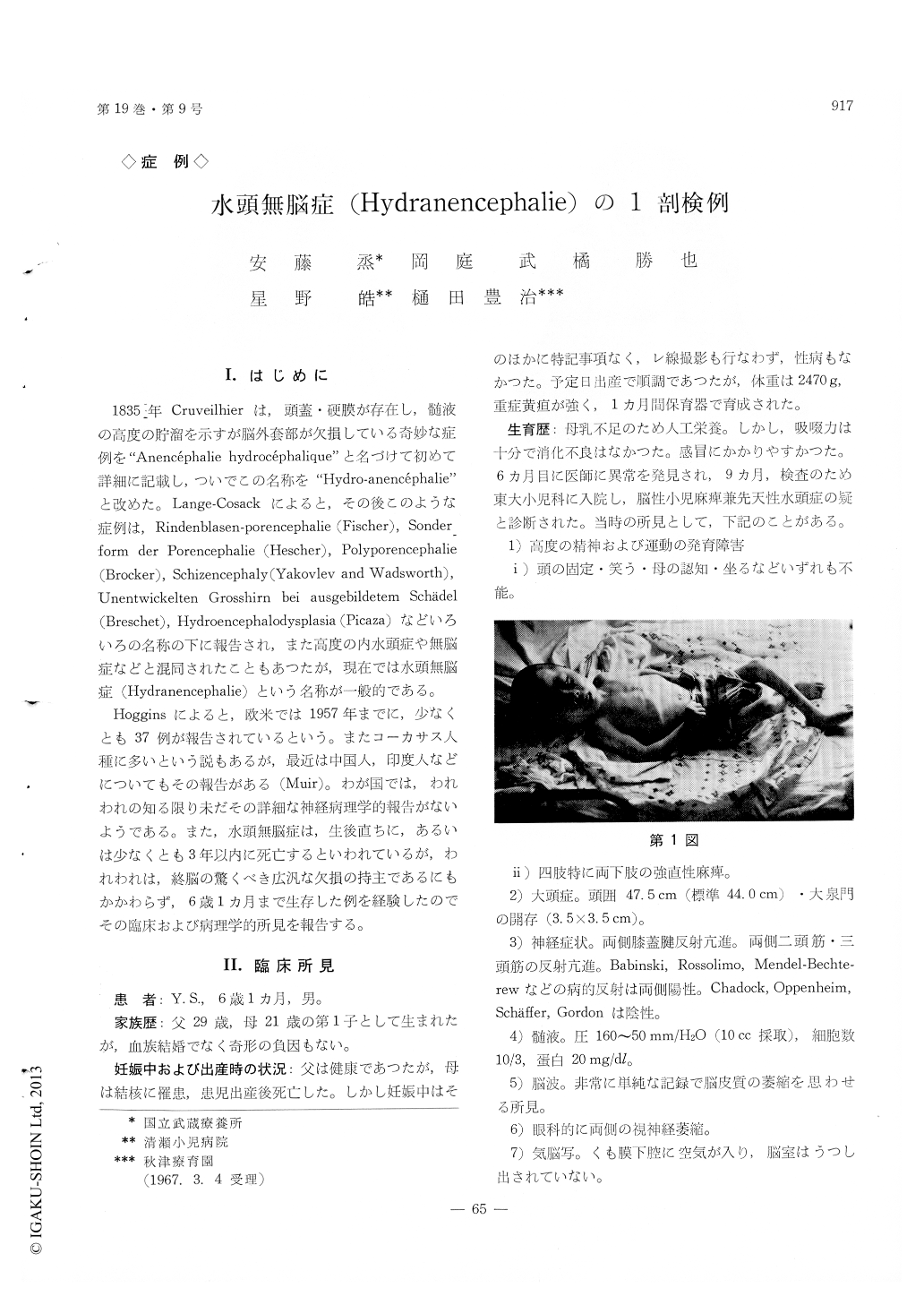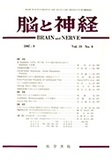Japanese
English
- 有料閲覧
- Abstract 文献概要
- 1ページ目 Look Inside
I.はじめに
1835年Cruveilhierは,頭蓋・硬膜が存在し,髄液の高度の貯溜を示すが脳外套部が欠損している奇妙な症例を"Anencephalie hydrocephalique"と名づけて初めて詳細に記載し,ついでこの名称を"Hydro-anencephalie"と改めた。Lange-Cosackによると,その後このような症例は,Rindenblasen-porencephalie (Flscher), Sonder form der Porencephalie (Hescher), Polyporencephalie(Brocker), Schizencephaly (Yakovlev and Wadsworth),Unentwickelten Grosshirn bei ausgebildetem Schadel(Breschet), Hydroencephalodysplasia (Picaza)などいろいろの名称の下に報告され,また高度の内水頭症や無脳症などと混同されたこともあつたが,現在では水頭無脳症(Hydranencephalie)という名称が一般的である。
Hogginsによると,欧米では1957年までに,少なくとも37例が報告されているという。またコーカサス人種に多いという説もあるが,最近は中国人,印度人などについてもその報告がある(Muir)。わが国では,われわれの知る限り未だその詳細な神経病理学的報告がないようである。また,水頭無脳症は,生後直ちに,あるいは少なくとも3年以内に死亡するといわれているが,われわれは,終脳の驚くべき広汎な欠損の持主であるにもかかわらず,6歳1カ月まで生存した例を経験したのでその臨床および病理学的所見を報告する。
This report is to illustrate a case of male patient with pronounced malformation of the brain, who could survive to six years and one month. The anom-alies and the apparent abnormalies were first noted on the sixth postnatal month by enlargement of head, spastic paralysis of each extremity, blindness, tonic-convulsive stretching and signs of severe mental retardation.
The whole brain weighed 280 grms. The cerebrum was spared by the unilateral orbital lobe on the right side, a part of the bilateral temporal lobes and the major part of the bilateral occipital lobes. The hip-pocampal gyri and the brain stem were relatively wholly organised. Each structure in the thalamus was identifiable but remarkably small in size. Thewall of the membraneous sac was composed of the remnants of glial layer and the ependymal lining was missing. By the fact that some parts of the cerebral cortex showed the four-layered type of the micropolygyria, the onset of the malformation was presumed to take place at around the fifth embryonal month.
The hydranencephaly is apparently conclusive from the clinical features as well as the post-mortem find-ings as above mentioned. According to the Lange-Cosack's classification, the pathological findings in this case may belong to the second group, whereas the clinical signs also reveal a characteristic set of the first group such as disturbed rhythm of sleep and repeated febrile episodes.
In this case the internal carotid arteries were comp-letely absent on both sides, namely, the whole brain was able to be supplied by the blood flow only thr-ough the vertebral arteries. This fact suggested again that the obstruction to the blood flow in the teritories supplied by the internal carotid arteries may result in the possible pathogenesis of the hydranen-cephaly.

Copyright © 1967, Igaku-Shoin Ltd. All rights reserved.


